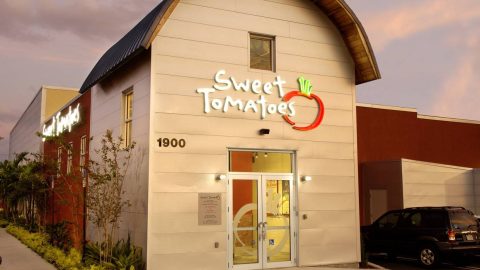Why Are So Many Quick-Service Restaurants Being Sold?

From Panera to Checkers to Popeyes, the deals keep rolling in, and don’t expect that to change anytime soon.
The March 23 announcement of Oak Hill Capital’s purchase of the Checkers and Rally’s burgers brands fell in the middle of a quick-service acquisition spree. The month before, Burger King parent Restaurant Brands announced it had purchased Popeyes Louisiana Kitchen in a $1.8 billion deal. Earlier in 2016, Roark Capital purchased a majority stake of Jimmy John’s Sandwiches, Arlon Group acquired Cici’s Pizza, and CenterOak Partners bought the Wetzel’s Pretzel’s brand. And on April 5 of this year, JAB Holding Co. announced its $7.5 billion purchase of Panera Bread Co.
Rick Silva, president and CEO of Checkers Drive-In Restaurants, says the recent buying spree is easily explained by the strength of the quick-service restaurant market, which he described as “incredibly huge” and “very stable.”
“I think the reality is dollars flow into the parts of the industry and parts of the economy that are able to deliver returns to shareholders and owners. And I think the restaurant industry is able to deliver returns,” he says. “I think what you’re seeing is the reality that the restaurant industry is incredibly healthy. It’s a great place to be a part of.”
In addition to its own merits, the restaurant industry may be getting a bump from the declining retailer segment. As many traditional retailers struggle to maintain market share against the proliferation of e-commerce, some investors may be looking to sink their cash into other sectors, Silva says.
“That is not affecting the food industry,” he says. “At the end of the day, the food has to get cooked close to where you consume it.”
But why Checkers?
“Investors are looking for a strong track record. I think they’re also looking or a strong and stable management team and they’re also looking for exciting growth ahead,” Silva says. “At Checkers and Rally’s, they found all three of them.”
Checkers touts six consecutive years of system-wide same-store sales growth. And Silva says the $525 million sale to Oak Hill Capital will allow the company to expand at an even faster rate. He says research from Buxton found that the 850-unit chain could add some 3,000 restaurants within its current footprint, which stretches across 29 states and the District of Columbia.
“We can grow ourselves by almost four times in the states we’re already in,” he says. “That’s the kind of exciting growth that private equity groups are looking for. And it’s not all to come. We’re already doing it.”
Across the country, restaurants are now selling at record pace, says Bob House, the general manager for BizBuySell.com and BizQuest.com, the Internet’s largest and most heavily trafficked business-for-sale marketplaces.
His website tracked a record 511 restaurant sales during the first quarter of 2017—compared with 395 in the first quarter of 2016. The median sale price of each sale rose 29 percent over that time period, House says.
“In general, what you’re seeing is increased confidence: The stock market’s up, people have more access to capital, both in their personal portfolio, but also in terms of financing options. So deals are getting done,” House says. “Baby boomers are retiring and there’s plenty of supply of good businesses out there. And then you have private equity groups and in general entrepreneurs who feel buoyed by the performance of these businesses and are taking action. It’s kind of a good storm of transaction activity.”
A hot market also means sales are happening faster, House says.
“Businesses have been selling fast over the last four quarters,” he says. “In general, it takes these businesses six to nine months to sale. Back in the recession it probably took a year. Recently, it’s been about six months. And that’s been coming down. It’s been accelerating.”
But even as the market heats up, not all have benefited equally.
In California, skyrocketing real estate costs and rising labor rates have put a pinch on restaurateurs looking to sell, says broker Steve Zimmerman, president, CEO, and principal broker of Restaurant Realty Company.
“In high rent areas, either in northern or southern California, you’re seeing a consolidation of a number of independent non-franchised units, where the economics just don’t pencil out. You’ll still have some growth in the casual, fast-food arena, because people can still afford those type of opportunities,” Zimmerman says. “Most sellers if they have a viable business making money, most likely they are not making as much money as they did a few years ago. By and large sellers are motivated to sell.”
Zimmerman is more bullish on value-driven concepts. He has example after example of independent, full-service concepts that still rake in millions in annual revenues, but little to no profit. Rarely are independent restaurateurs in California selling as an exit strategy to retirement.
“It happens occasionally, but unfortunately a lot of people wait until it’s too late. Their sales have plummeted, their costs have increased,” Zimmerman says. “Seventy to 80 percent of our sells are what we call asset sales, which means there’s not much good will, the business is either marginally profitable or losing money, and the buyer potential is somebody thinking they have a better mousetrap … Very rarely do we sell something that somebody is really making money. That’s just the reality.”






